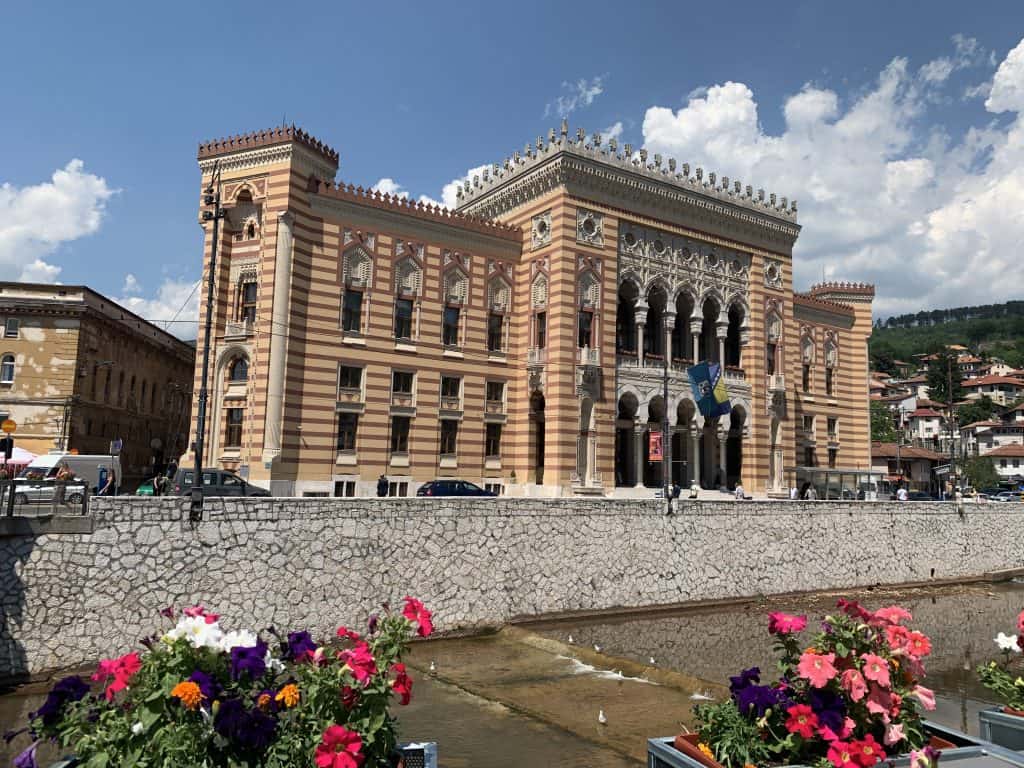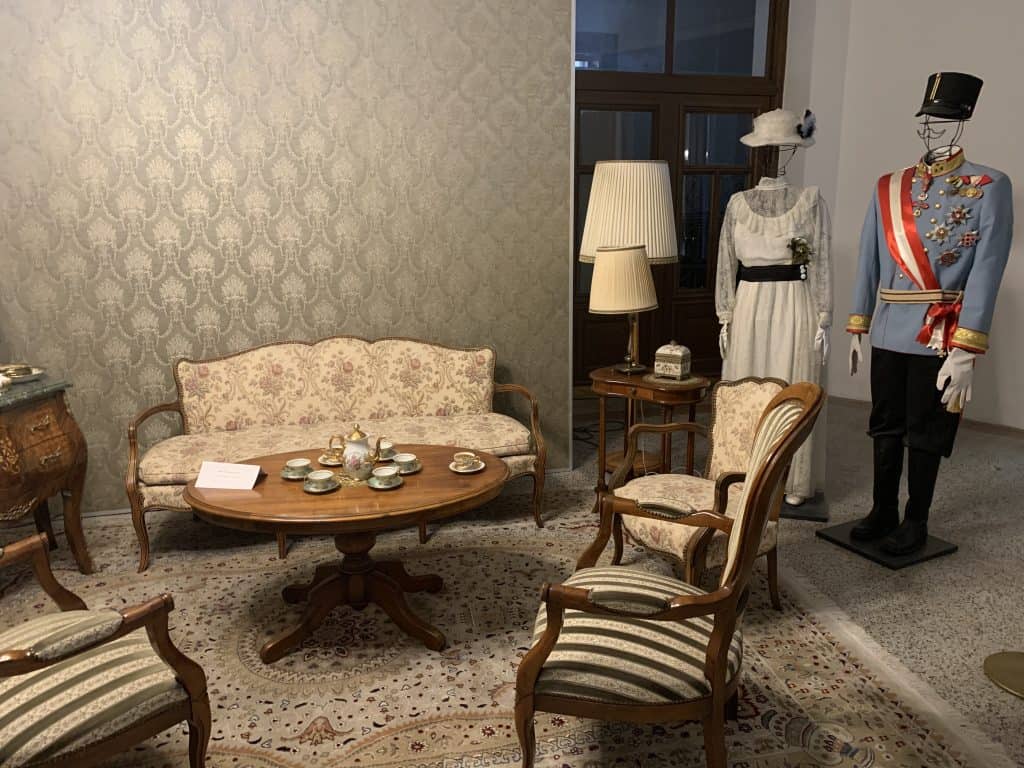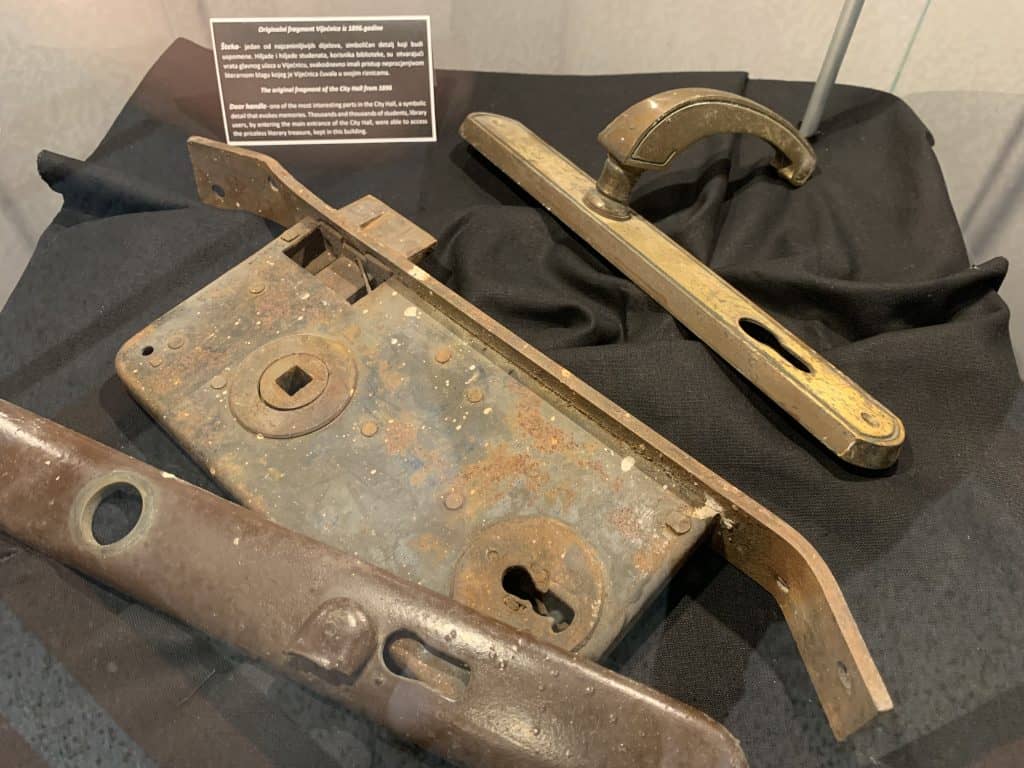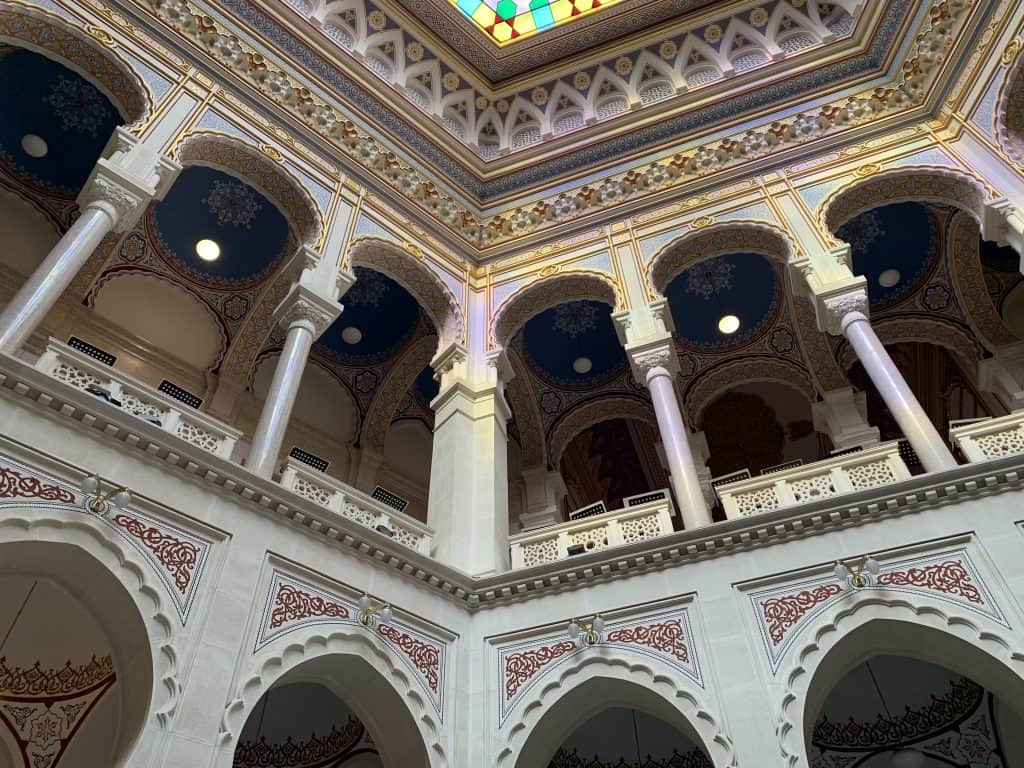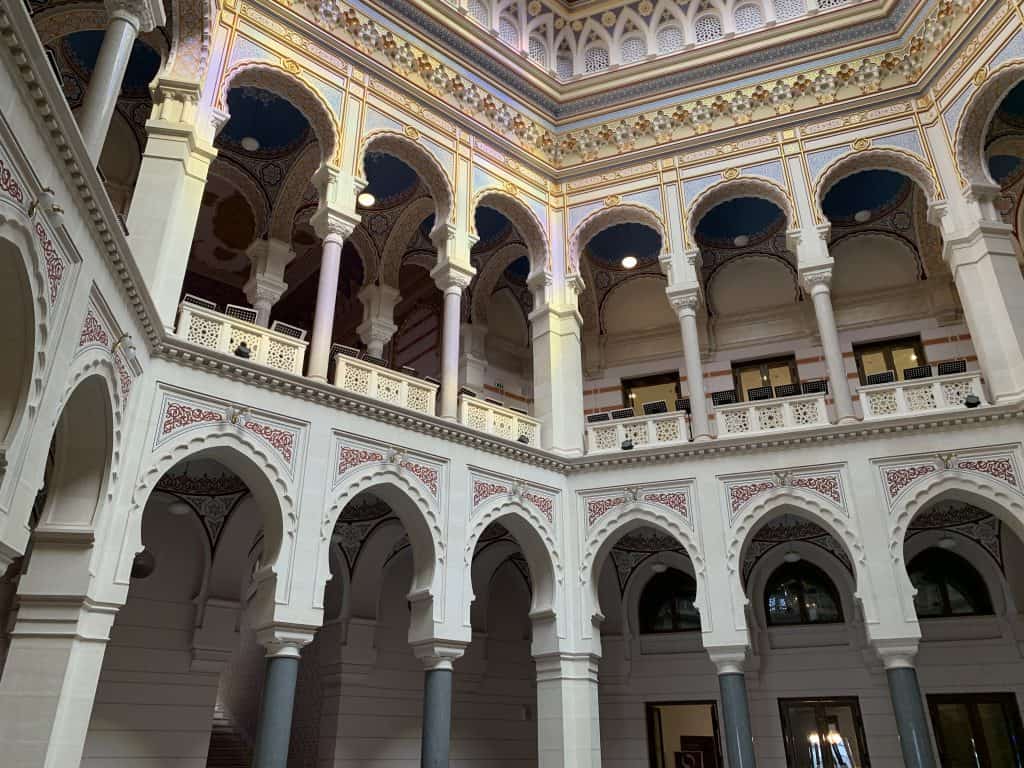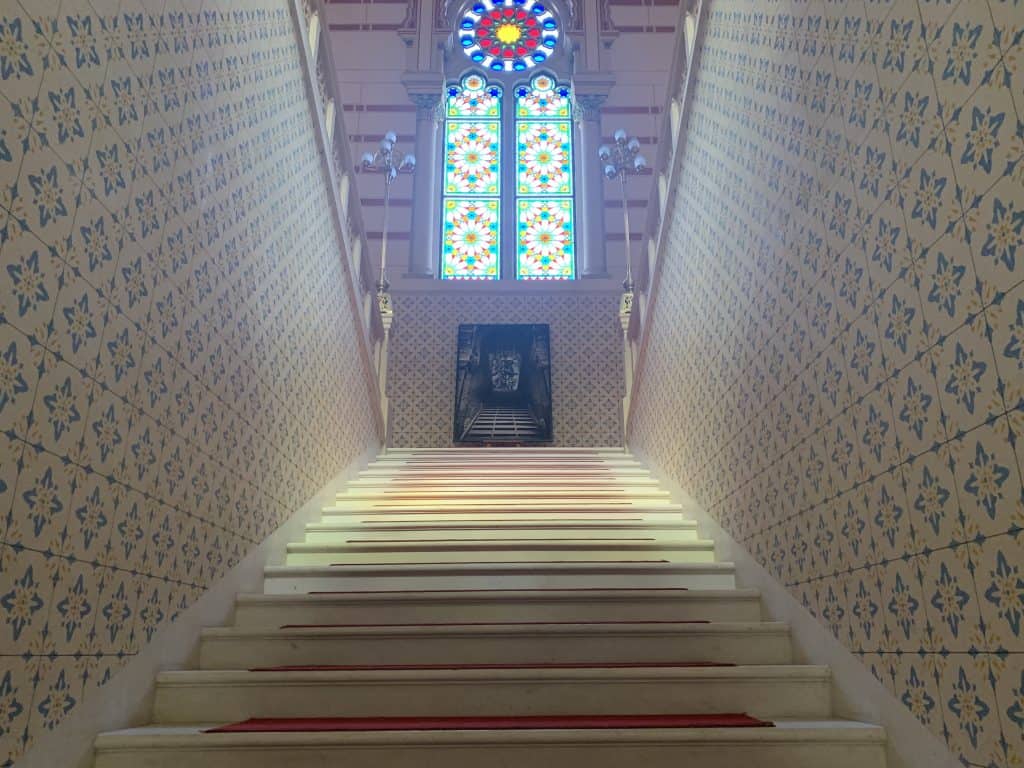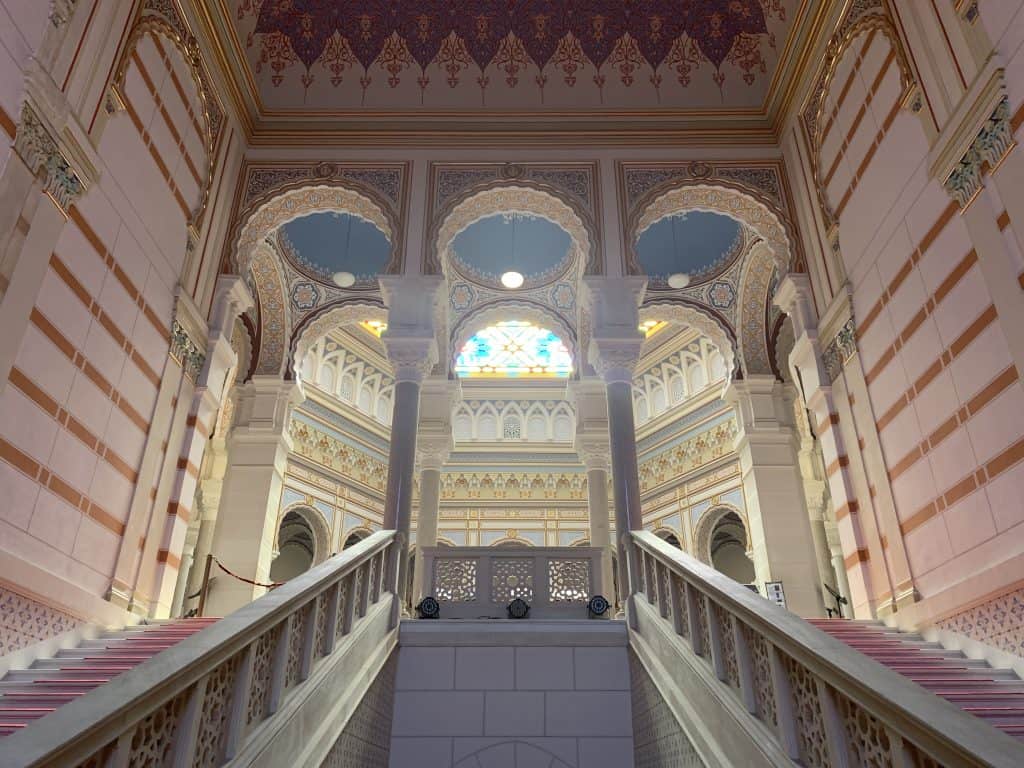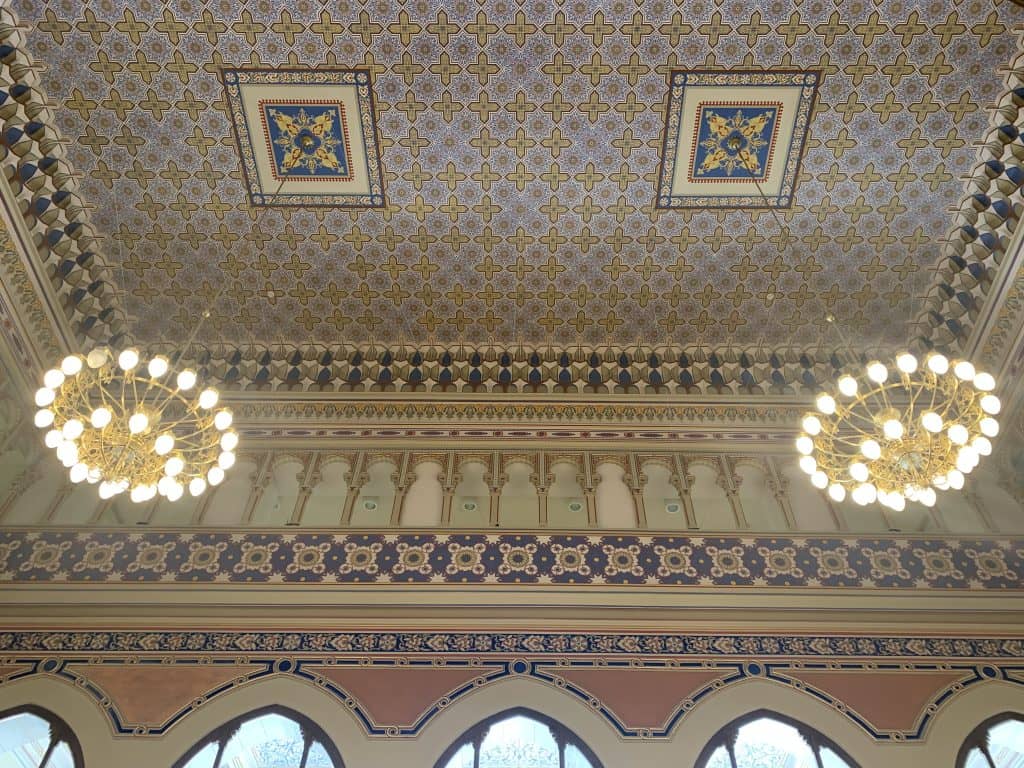
The building of the National Library was built in the late 1800s on the orders of the Austro-Hungarian authorities.
After almost five centuries of Ottoman rule, the population was not very happy to have another master. The Austro-Hungarian authorities then decided to build the building to demonstrate their power and to make friends with the local Muslims by choosing an oriental style.
They entrusted the task to the best architects of the time, and the project of the Prague-born architect Alexander Vitek was chosen, who even went to study architecture in Cairo. Legend has it that Vitek, disappointed by how his work had come about, committed suicide before the end of the work, which was then finished in 1896.
The rumors of a curse of the Palace became greater when Archduke Ferdinand of Habsburg entered it just 10 minutes before suffering, together with his wife Sofia, the attack near the Latin bridge.
When World War II ended, the palace took on a completely different role. Being also the seat of the Academy of Sciences, the collection of books began to constitute the so-called National Library and the University Library.
It was bombed between 25th and 26th August 1992 with the precise purpose of destroying it being the symbol of peaceful meeting between cultures and peoples.
At the end of the bombing the library was reduced to a smoking skeleton. The foundations and the outer walls remained but 90% of the literary heritage had been lost in the flames. Among the saved publications we find fortunately the Haggadah. It is a fourteenth-century work handwritten on calfskin illustrated with miniatures of the Bible in copper and gold.
After the siege, the Government began the reconstruction of the library that lasted 18 years financed for the most part by the European Union. It was reopened to the public on 9th May 2014.
Today it is the seat of the City Hall.

